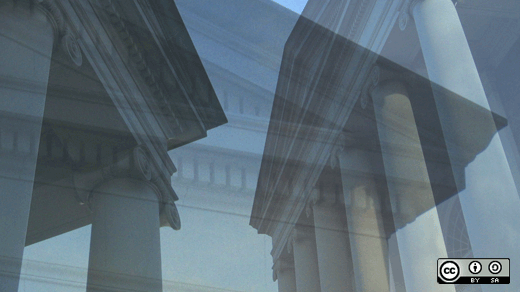A recent post on the top events ahead in 2014 for reforming abusive patent litigation focused on efforts by State Attorneys General, the Federal Trade Commission, and US Congress. Let’s now take a look to another field involved in the multi-prong strategy to address patent abuse: the Supreme Court, which is considering a number of important cases.
One high profile case, Alice Corporation Pty. Ltd. v. CLS Bank International, presents the latest test of whether an 'abstract idea' can be patented. The history of this case is a bit tortuous, but as it stands right now, a lower appeals court found the patent in question invalid, but the judges were sharply divided on the grounds for their decision.
As explained in a brief filed by Red Hat and other tech leaders in December 2012, the appeals court was considering the case:
"Many computer-related patent claims just describe an abstract idea at a high level of generality and say to perform it on a computer or over the Internet. Such barebones claims grant exclusive rights over the abstract idea itself, with no limit on how the idea is implemented. Granting patent protection for such claims would impair, not promote, innovation by conferring exclusive rights on those who have not meaningfully innovated, and thereby penalizing those that do later innovate by blocking or taxing their applications of the abstract idea…The abstractness of computer-related patents bears much of the blame for the extraordinarily high litigation and settlement costs associated with such patents."
CLS Bank is being argued before the Supreme Court on March 31, with amicus briefs by those concerned about the scope of 'software inventions' due at the end of February. Whether the Supreme Court will get to the question of whether, as a general matter, software is patentable is unclear. There is a distinct possibility that the Supreme Court will add to its decision in the Bilski case and further restrict the patenting of 'abstract ideas'.
Several cases look at questions that could lessen the prevalence of litigation abuse.
For example, two cases—Octane Fitness v. Icon Health and Fitness and Highmark Inc. v. Allcare Management Systems, Inc.—focus on when a situation is considered "exceptional" within the meaning of the fee-shifting provision of the patent statute.
As readers may recall, the asymmetrical costs and risks of patent litigation are disproportionately and unfairly borne by defendants targeted by a Patent Assertion Entity (PAE) who, unlike PAEs, are creating jobs, engaging in innovation, and contributing to the economy.
A successful defendant against a PAE almost never recovers its costs, because the Court of Appeals for the Federal Circuit has set an extraordinarily high standard to shift costs under Section 285 of the Patent Act: a winning defendant must prove by clear and convincing evidence that the patent owner plaintiff’s claims were objectively baseless (i.e., no reasonable person would think they would succeed) and that they were brought in subjective bad faith (i.e., the patent owner-asserter knows the claims are baseless).
These two cases may bring some new flexibility to the current "exceptional circumstances" regime. However, it is unlikely to change the underlying asymmetries that exist for which legislation is required.
Another area that the Supreme Court has decided to look into is the requirements for proving induced (as opposed to direct) infringement. In Limelight Networks, Inc. v. Akamai Technologies, Inc, the Federal Circuit effectively created a new form of infringement for "inducing the performance" of only some of the claim steps of a method patent.
The case involves an issue sometimes called "divided infringement." Divided infringement occurs if all the steps of a patented method are performed, but they’re split up among different parties. This is typical in the Internet environment where so-called "interactive" method patents are involved. For example, some steps of a claimed method may be performed by a host computer, while the remaining steps are performed by an end user.
As it stands, unless the Supreme Court reverses the lower appeals court ruling, it’s possible that a party could be liable for 'inducing' infringement even if it wouldn’t be liable for direct infringement because of the novel theory that the patent is divided.
Finally, in Nautilus, Inc. v. Biosig Instruments, Inc., the Supreme Court agreed to hear a case that could affect the standard for determining when a patent claim is invalid for being too ambiguous. In its rulings, the Federal Circuit has articulated a standard for review that makes it very difficult, if not impossible, to invalidate a patent claim as being "indefinite."
With these cases, the Supreme Court has one of the most patent-intensive dockets I can recall in years. It is already issuing opinions. In Medtronic, Inc. v. Mirowski Family Ventures, the Supreme Court found in January—in a unanimous view—that when a patent licensee challenges a claim of infringement (and in this case, sought a declaratory judgment against the patent holder) to establish that there is no infringement, "the burden of proving infringement remains with the patent holder." The lower appeals court had held otherwise.
Some of these cases could significantly alter the judicial terrain that affects open source and software-related patents. Certainly, they reflect the continued tension between the Supreme Court and and the Federal Circuit, whose decisions have often contributed to the challenges facing our patent litigation system.
But even if all the cases come out favorably, it will still be essential to pursue the multi-prong strategy of legislative, administrative, and other reforms.
A shout out to my colleague, Rob Tiller, Red Hat’s VP for Intellectual Property and Litigation, for his collaboration with me on this post and his excellent insights.







1 Comment